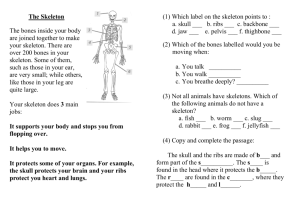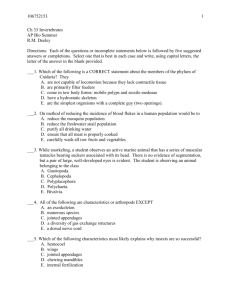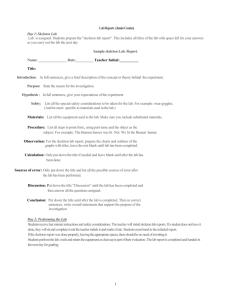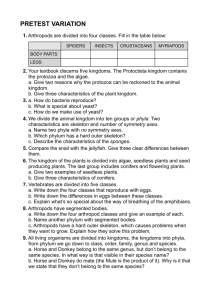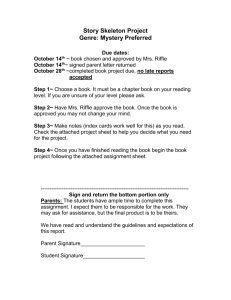File
advertisement
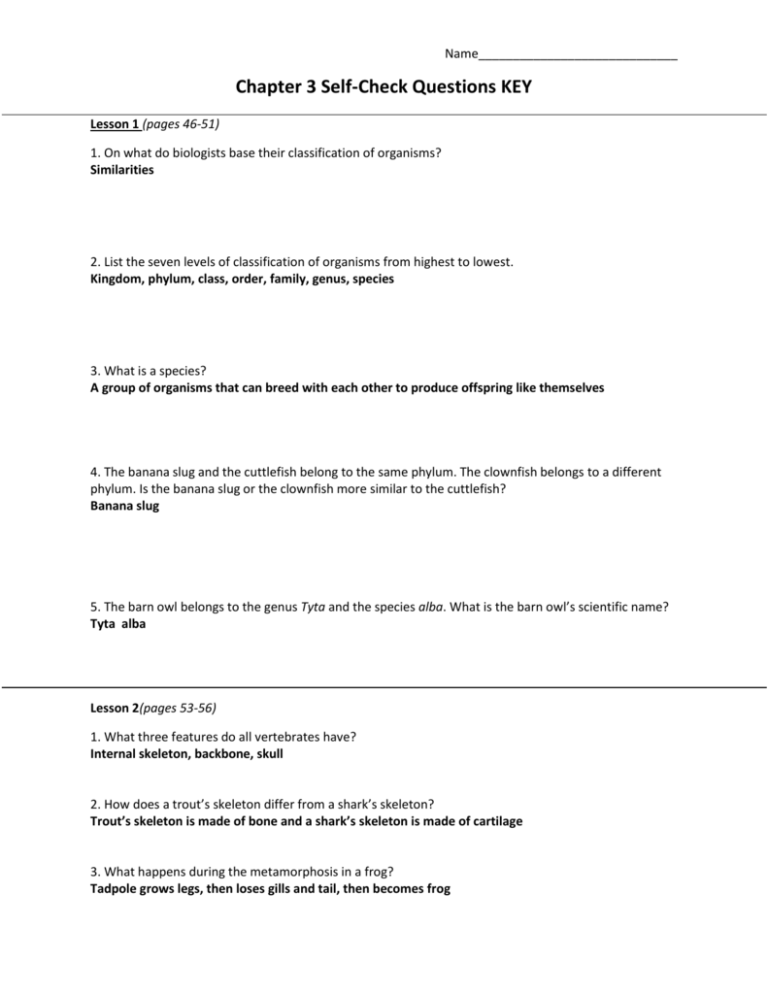
Name_____________________________ Chapter 3 Self-Check Questions KEY Lesson 1 (pages 46-51) 1. On what do biologists base their classification of organisms? Similarities 2. List the seven levels of classification of organisms from highest to lowest. Kingdom, phylum, class, order, family, genus, species 3. What is a species? A group of organisms that can breed with each other to produce offspring like themselves 4. The banana slug and the cuttlefish belong to the same phylum. The clownfish belongs to a different phylum. Is the banana slug or the clownfish more similar to the cuttlefish? Banana slug 5. The barn owl belongs to the genus Tyta and the species alba. What is the barn owl’s scientific name? Tyta alba Lesson 2(pages 53-56) 1. What three features do all vertebrates have? Internal skeleton, backbone, skull 2. How does a trout’s skeleton differ from a shark’s skeleton? Trout’s skeleton is made of bone and a shark’s skeleton is made of cartilage 3. What happens during the metamorphosis in a frog? Tadpole grows legs, then loses gills and tail, then becomes frog 4. Why are a reptile’s eggs able to survive in dry places? They have a soft shell 5. What two features do mammals have that other vertebrates do not have? Mammary glands and hair Lesson 3 (pages 57-62) 1. How do sponges feed? They strain food particles out of the water as the water moves through their bodies 2. Contrast radial symmetry and bilateral symmetry. Animals with radial symmetry have body parts arranged like spokes on a wheel Animals with bilateral symmetry have a left half and a right half of their bodies that are the same 3. Give an example of an organisms that is: Flatworm—Tapeworm Roundworm--hookworms Segmented worm—earthworms or leeches 4. How do echinoderms move? They use their tube feet to attach to surfaces and move 5. Explain why arthropods molt. An external skeleton is not able to grow like an internal skeleton does so anthropods must shed their skeletons to grow in size


